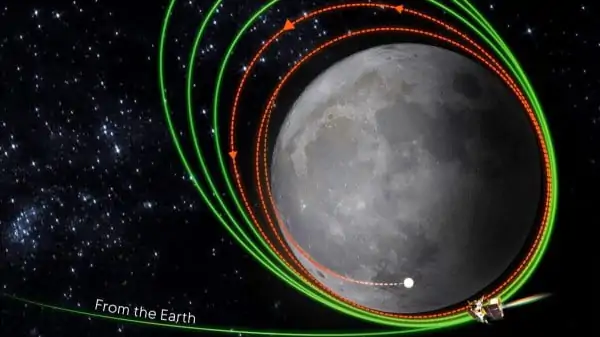BENGALURU: Slightly over a month ago, the Chandrayaan-3 mission was initiated aboard the GSLV-Mk3 or LVM-3. Today signifies a pivotal achievement as the spacecraft readies itself for a crucial juncture – the detachment of the landing module housing Vikram (the lander) and Pragyan (the rover) from the propulsion module.
Isro accomplished a significant maneuver on Wednesday by aligning the spacecraft into its designated orbit of 153km x 163km. This maneuver has paved the way for the imminent separation of the landing module. This separation marks the initiation of the mission’s final and most crucial phase: the lunar landing.
Chandrayaan-3: Journey Thus Far
The concept of Chandrayaan-3 emerged shortly after the challenges faced by the Chandrayaan-2 mission during its attempted soft landing in September 2019. Over nearly four years, Isro diligently prepared the spacecraft for launch, undertaking several modifications to the lander. These adjustments included the removal of the fifth engine, reinforcement of the lander’s legs, refinement of algorithms, expansion of solar panel coverage, and incorporation of new sensors.
Read Also:- How many Vande Bharat Express are there in India till now
The culmination of these endeavors occurred on July 14 when Chandrayaan-3 was successfully launched and inserted into its intended elliptical Earth orbit. A day later, on July 15, Isro executed the inaugural orbit-raising maneuver, propelling the spacecraft into an orbit measuring 41,762km x 173km.
Read Also:- Chandrayaan 3 Live Tracking: Unveiling the Journey to the Moon
Continuing the trajectory, a second Earth-bound maneuver occurred on July 16 to stabilize the Perigee, the point nearest to the Moon. This maneuver resulted in a new orbit of 41,603km x 226km. Progressing further, a successful third Earth-bound maneuver on July 18 raised the Apogee, the farthest point from Earth, leading to an orbit of 51,400km x 228km.
The momentum persisted with subsequent maneuvers: On July 20, the penultimate Earth-bound operation placed the spacecraft in an orbit measuring 71,351km x 233km. Finally, on July 25, the Apogee exceeded the 1.2-lakh-km mark following the successful execution of the final Earth-bound maneuver.
TLI and Lunar-Bound Phases
A pivotal milestone arrived six days after the last Earth-bound maneuver when Isro executed the trans-lunar injection (TLI) on August 1, redirecting Chandrayaan-3 towards the Moon. As TLI concluded, the spacecraft’s altitude reached nearly 3.6-lakh-km.
Subsequently, on August 5, Isro successfully performed the Lunar Orbit Insertion (LOI), maneuvering Chandrayaan-3 into an elliptical lunar orbit. During this phase, the Perilune, the point nearest to the Moon, measured 164km, while the Apolune, the farthest point from the Moon, extended to 18,074km.
Read Also:- Information about ISRO for project
Without delay, the following day witnessed the successful completion of the second lunar-bound maneuver, positioning the spacecraft into an orbit of 170km x 4,313 km on August 6.
Continuing the progression, Isro reported on August 9 that Chandrayaan-3’s orbit had been adjusted to 174km x 1437km following the third lunar-bound maneuver. Just five days later, the mission transitioned to the orbit circularization phase through the fourth lunar-bound maneuver on August 14, securing an orbit of 151 km x 179 km.
Read Also:- Wego Train Booking: Simplifying Your Train Travel Experience | New Train Ticket Booking App 2023
The stage is now set for today’s separation event (August 17), which has been long-anticipated and marks a significant stride in Chandrayaan-3’s mission trajectory.
Real Also:-
Gadar 2 Day 2 Collection: A Box Office Triumph
What is the course of Artificial Intelligence | What is Artificial Intelligence Course, Fees in 2023
Anju Pakistan News | Who is Anju, story, and why did she go to Pakistan | Full Details
Is Sahara Refund Portal Launched | How do I Claim My Sahara Refund
